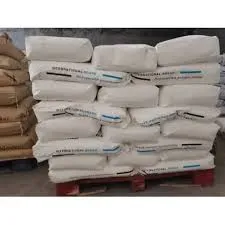
Nov . 01, 2024 19:58 Back to list
High-Performance Tile Adhesive with HPMC for Enhanced Bonding Solutions
Understanding Tile Adhesives HPMCs and Their Importance
Tile adhesives are a crucial component in the flooring and construction industries, particularly when it comes to laying ceramic or porcelain tiles. Among the various types of tile adhesives available, Hydroxypropyl Methylcellulose (HPMC) stands out due to its unique properties and benefits. This article will explore what HPMC is, its advantages in tile adhesives, and its applications.
HPMC is a non-ionic, cellulose-based polymer derived from naturally occurring cellulose. Its modification allows for a wide range of chemical properties, making it an incredibly versatile additive in various construction materials. In the formulation of tile adhesives, HPMC serves multiple functions that enhance the overall performance of the adhesive.
Understanding Tile Adhesives HPMCs and Their Importance
Moreover, HPMC improves the viscosity of tile adhesives, allowing for better consistency and application. A thicker adhesive can help prevent tiles from sliding down during the installation process, thereby ensuring precise alignment. Additionally, HPMC helps in enhancing the thixotropic behavior of the adhesive, meaning that it can become less viscous when stirred or agitated, making it easier to apply but thickening again upon standing.
tile adhesive hpmc

Another significant advantage of HPMC in tile adhesives is its ability to enhance adhesion to various substrates. This adaptability allows tile adhesives with HPMC to bond effectively to different surfaces, including concrete, gypsum, or even existing tiles. Such versatility is particularly beneficial in renovation projects where multiple substrates may be present.
Additionally, HPMC contributes to the flexibility and elasticity of tile adhesives. In environments where temperature fluctuations occur, the flexibility provided by HPMC helps to accommodate the natural expansion and contraction of tiles. This can minimize the risk of tile cracking and extends the lifespan of the tiled surface.
It's also important to consider the environmental aspect of HPMC. As a cellulose derivative, it is non-toxic and biodegradable, making it a favored choice for eco-conscious builders and homeowners. When using HPMC in tile adhesives, you can achieve a sustainable and durable solution for your tiling needs.
In conclusion, HPMC plays a pivotal role in the formulation of modern tile adhesives. Its water retention, viscosity enhancement, adhesion properties, flexibility, and environmental friendliness make it an essential component for achieving high-quality tile installations. Whether you're a professional tiler or a DIY enthusiast, understanding the advantages of HPMC can help you choose the right adhesive for your project, ensuring a long-lasting and aesthetically pleasing result.
-
Versatile Hpmc Uses in Different Industries
NewsJun.19,2025
-
Redispersible Powder's Role in Enhancing Durability of Construction Products
NewsJun.19,2025
-
Hydroxyethyl Cellulose Applications Driving Green Industrial Processes
NewsJun.19,2025
-
Exploring Different Redispersible Polymer Powder
NewsJun.19,2025
-
Choosing the Right Mortar Bonding Agent
NewsJun.19,2025
-
Applications and Significance of China Hpmc in Modern Industries
NewsJun.19,2025







